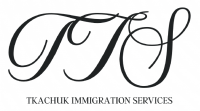If you want to visit Canada and either work for a time or go to school, you need different kinds of permits or visas to stay in the country for that specific amount of time. If you are unsure of the requirements for your particular situation, this guide about temporary residency will help you understand the entire process.
Visitor Visas and Tourists
Most travellers to Canada require to have a Temporary Resident Visa or an Electronic Travel Authorization (not both) . This government document allows foreigners to enter the country for a temporary period of time. There are a few things you need to do to get this visa. First, you need to specify the reason for coming to Canada; if it’s tourism, or if you are a returning worker or student, you need to provide some form of documentation that provides that information.
Here is a list of documents below that you can use:
- Documents representing your reason to visit Canada: visiting a friend, or for tourism, going back to school etc. You will include either an invitation letter from a friend, his/her documents; or your recent school transcripts and acceptance letter ect.
- Proof of your departure after your authorized stay. In the case of visitor or tourist visa, it is highly recommended to submit proof that you have strong ties to your home country, such as a letter from your employer that confirms they were notified of your temporary leave and that your position will be secured once you return.
- Documents proving your funds. For example, you can show your bank statements or savings that you will have during your stay.
- On health and criminal grounds, you are eligible to immigrate to Canada. Some countries may be except
- When travelling as a tourist, you may need to provide your entire travel plans, such as flight tickets, hotel reservations, and a complete itinerary.
- Some additional documents may apply, that’s why we recommend contacting us for consultation as every case is unique.
Study Permit
If you want to come to Canada to study at one of our schools, then you first need to be accepted by a designated learning institution (DLI). Then you must provide a list of documents and apply for a study permit before you are able to travel to Canada. If you are in school for less than six months, you don’t need to apply for a student permit.
Here is a list of needed documents:
- Proof of enrollment to DLI (acceptance letter, registration of courses)
- Proof of funds (tuition fees receipt, living expenses for yourself, transportation etc.)
- Proof that you are admissible to Canada based on criminal record and health exam
- Proof that you will leave Canada when your study permit expires
- Some countries have an access to apply for Student Direct Streams which would give them a faster way to get a study permit.
- Some additional documents may apply, that’s why we recommend contacting us for consultation as every case is unique.
Once you’re in Canada and have your study permit, you’ll be able to work part-time for up to 20 hours per week during your studies. If you are on a study break, then you may work full time, which is 30 hours per week or more. When you finish your program, you can apply for a Post-Graduate Work Permit (PGWP), which means you can legally work for any employer in Canada full-time or part-time.
Now, having a study permit doesn’t mean you have a visa. Study Permit allows you to study in Canada, but you still need visa if you plan to re-enter Canada. So, as mentioned, you need to get an Electronic Travel Authorization (eTA) or a visitor visa before you can travel to Canada.
Work Permit
If you plan to come to Canada to work, you will need to get a work permit. There are different types of work permits; they can either be employer-specific or open or occupation-specific (mainly available for caregivers). Usually, a positive Labour Market Impact Assessment (LMIA) from your employer, a copy of your job offer and some other documentation is required before you can apply for a work permit. Also, if LMIA supports your work permit, then they are closed permits meaning that you are allowed to work for only one employer during your stay in Canada.
Here is a list of requirements you will be before you apply:
- Positive LMIA
- Valid job offer letter signed by you and your employer
- Proof that you meet the requirements of the job (reference letters, proof of compensation, education documents, licensing, etc.)
- Proof that you will leave Canada after your work permit expires
- Show that you have enough funds to support yourself during your stay.
- Not be inadmissible on criminal and health grounds.
- Some additional documents may apply depending on your country of residence or origins.
Not everyone is required to have a Work Permit; people like business visitors, military personnel, performing artists, and athletes don’t need one. There are also work permits that are exempt from LMIA:
- If you are married to or in common-law with a foreign worker who has a work permit supported by the LMIA.
- If you are a student who completed his/her studies in Canada at DLI, you may apply for a Post Graduate Work Permit that doesn’t require LMIA.
- If you applied for your Permanent Residency and are awaiting a decision on your application, you may apply for your work permit or extension.
- If you received a positive decision on your Provincial Nominee Program, you might use the nomination certificate to extend your stay in Canada as a worker or apply from overseas.
- You may be exempt from LMIA if you fall under the category of “significant benefit.”
- Your work permit is covered by an international agreement, such as NAFTA or GATS.
- You are applying as an eligible candidate under International Experience Class (IEC).
Let Tkachuk Immigration Services help you get started, so contact us or book a consultation today!



